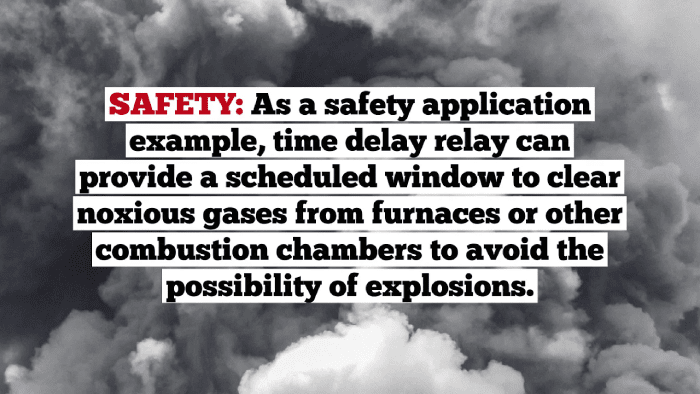Understanding the Function and Fundamentals of Time Delay Relays
Relays instruct electrical and electronic devices and machines to activate. We rely on relays to activate a multitude of appliances, machinery, and equipment ranging from motor vehicles to cell phones to furnace fans and conveyor belts.
Time delay relays have a time-delay function built in. Triggered in different ways, time delay relays can minimize the amount of energy used to start large industrial machinery or to switch lights or machines on and off at specified times. They can also be used to ensure that different parts of a machine start separately at predetermined times, such as:
- Production
Time delay relays may be used to control loads or production processes in a variety of ways. For instance, a time delay relay can ensure that items move from one conveyor to another when required to prevent items on a conveyor belt piling up on top of each other.
- Safety
As a safety application example, furnaces or other combustion chambers require ventilation is needed to get rid of fumes and avoid the possibility of explosions. A time delay relay can provide a scheduled window to clear noxious gases from the chamber.
Typically, a time delay relay is triggered either by opening or closing a circuit or by providing an input current. The trigger signal may be designed with either a dry-contact control switch, such as a float switch, limit switch, or push button; or with voltage. However, there are multiple types of time delay relays and their timing functions operate differently.
How a Time Delay Relay Functions
The type of time delay relay used will depend on the system setup. On- and off-delay timers represent the most typical time delay relay timers in use. Other types include interval-on-operate, flasher, and repeat cycle timers.
- On-delay timers
Normally open, on-delay timers start timing when the input voltage (power) is applied. The output is energized at the end of the delay. Input voltage has to be removed to de-energize the output and reset the time delay relay.
Also referred to as delay-on-operate timers, they are often used for blower motors to delay the operation for a specific time period after a gas, electric, or oil heater has been turned on. On-delay timers are also used to stagger starting times for multiple compressors or motors that are activated by the main switch. This avoids excessive surge current in the power line. Other applications include burglar and intrusion alarms, open-door warnings, power supply sequencing, oven ignitor controls, and fan controls.
- Off-delay timers
Off-delay timers (also known as delay-on-release, delay-on-break, or delay-on-energization timers) are ready to accept the trigger when the input voltage is applied. An output is energized by applying the trigger, which must be removed for the time delay to start. An output is de-energized at the end of the time delay period. If the trigger is applied during the delay, it will reset.
Off-delay timers can be used in air-conditioning systems to hold the blower motor in operation for a specific time period after the thermostat has turned the cooling compressor off. They may also be used to operate electrical devices and motors for a specified time, such as coin-operated dryers in commercial laundries. Other applications include gas valve controls, telephone circuit control, and elevator door control.
- Interval-on-operate
Also called one-shot timers, the output for interval-on timers is already energized and the time delay starts when the input voltage is applied. The output is de-energized once the delay period is over. The input voltage has to be removed so that the time delay relay can be reset.
Interval-on time delay relays may be used for a range of general purpose and demanding industrial and commercial applications, depending on the specific model chosen. Some burglar alarm systems utilize interval timers. Other applications include timed cycles for electric welding machines, automotive seat belt warnings, dispensing equipment, and pump stations.
- Flasher
When an input voltage is applied to a flasher, the contacts energize and de-energize after one another. The on-cycle and off-cycle times are the same lengths. The timer is reset by removing the voltage and then reapplying it. Flasher timers are commonly used with alarm systems, indicator lights, warning light systems, and sequential timers like those used for airport runway illumination.
- Repeat cycle
Repeat cycle timers have two controls so that cycles are independently adjustable. These cycles will continue to repeat as long as the voltage is applied to the time delay relay. Some repeat cycle timers start the off-timer first while others begin with the on-timer. For example, they may be used in conjunction with one another to make lamps flash on and off.
The Amperite Co. Time Delay Relay
Amperite Co. offers an expansive range of time delay relays to suit myriad applications. While our focus markets consist largely of original equipment manufacturers (OEMs) and electronics, we also offer customized products to meet all customer needs.
Feel free to contact us to see how we can help your business succeed.

